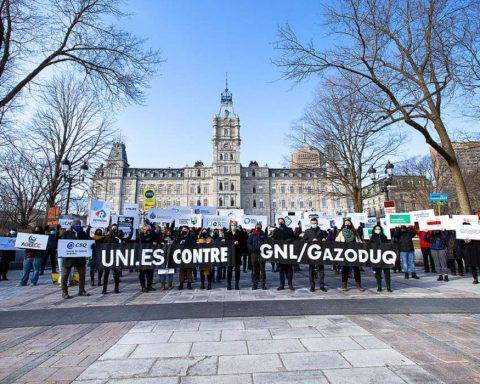Norway is known for several things, including its Viking roots, a singular obsession with cross-country skiing and an enormous sovereign wealth fund. Officially known as the Government Pension Fund Global (GPFG), it is currently valued at about $870 billion (U.S.). Funded by revenue generated from its offshore oil industry, the GPFG has amassed all of this wealth over the past 20 years. In comparison, Alberta’s Heritage Savings Trust Fund has around $15 billion (U.S.), despite having been set up decades earlier with the same purpose. Alberta has also produced significantly more oil than Norway during that time period.
Norway’s offshore oil exploration began in the mid-1960s with the appropriately named Ocean Viking oil rig finally finding oil in 1969. Early governments quickly became reliant on oil revenues to fund general budgetary matters, thus creating a destructive boom-bust cycle for the better part of two decades. At one point in the late 1970s, the country was close to asking the IMF for a stabilization loan. After yet another downturn in the late 1980s, a group of politicians and civil servants mapped out an ambitious strategy for managing the country’s oil revenue in a more sustainable way. The formal structure of the GPFG was crafted in 1990 and received its first payment of $200 million (U.S.) in 1996.
Martin Skancke was the architect of this plan while serving in the 1990s as the director general and head of the asset management department in the Norwegian Ministry of Finance. In 2002, he became the chief advisor to the Prime Minister on economic policy issues. He then moved up to head the asset management department of the Norwegian Ministry of Finance, which is responsible for the management of the GPFG. He currently runs his own consultancy, which assists other governments interested in setting up sovereign wealth funds, while also serving as the chair of the advisory board for the United Nations Principles for Responsible Investment.
Corporate Knights sat down with him to discuss the unique structure of oil revenue generation in Norway, as well as the position that the fund holds in the domestic political scene.
CK: How has Statoil managed to accumulate such remarkable wealth in its sovereign wealth fund over the past 18 years?
Martin Skancke: The main sources of revenue are taxes on oil companies. We have a corporate tax rate of 27 per cent on corporate profits, but there is also a special tax on oil companies which is 51 per cent. So, the combined tax on oil companies in Norway is 78 per cent. This applies to both Statoil and to private sector oil companies. Note that this is a tax on profits, not revenue.
The other major element is the government’s direct participation in the oil sector outside of Statoil. The government is sort of a silent partner, if you like – an equity partner in major projects. They pay their share of the investment costs and they get their share of the returns. That share is typically somewhere between 20 and 40 per cent of a field depending on its size and profitability. There is a separate state-owned company managing those assets that is not an oil company. They have no operations, but rather, act as financial partners in the different licenses. It is not taxed income, but rather, equity participation. So, the government pays its share of the investments and gets a share of the returns.
 CK: Doesn’t the 78 per cent tax rate stifle investment in offshore Norwegian oil?
CK: Doesn’t the 78 per cent tax rate stifle investment in offshore Norwegian oil?
Martin Skancke: Well, there’s a huge difference between profit taxes and royalties, in the sense that a royalty will take a part of the gross production value whether you’re profitable or not. With a percentage of the actual profits, you get a very high percentage of fields with low profits, but also get a very low percentage of fields that are extremely profitable. So, a royalty is not very targeted at the most profitable fields, whereas the profit tax, of course, is proportional to the profits. If you make a loss, we actually reimburse you for that loss, so it’s a unique system in that regard.
CK: I don’t think that people generally associate state ownership with risk-taking.
Martin Skancke: The government in Norway takes a lot more risks that most other governments developing petroleum reserves because these jurisdictions tend to protect their sources of income by setting a royalty on gross production value. This means that they will get income no matter what the profitability is, and that transfers the risk from the government to the private companies. In transferring this risk, it means that the government will take a lower share of the overall economic value. The more risk the government is willing to take, the higher the respective return will be.
Now, this wasn’t always the case in Norway. When we started oil production in the 1970’s, there was much more emphasis on growth-packed elements like royalties and much less on profits. This has shifted, in part, due to the improved financial position of the government, its strength and clout. It means that the government finds itself in a much better position to take risks.
CK: What position does the fund hold within Norwegian politics?
Martin Skancke: It certainly plays a central role, but I wouldn’t say it occupies a greater space than fiscal discussions in other countries. We have a fiscal framework that has proven to be relatively robust. It limits how much money you can take out of the fund. And there has been relatively broad agreement on that rule, which says that the withdrawals from the fund should be equal to the excessive return on the fund: no more than four per cent a year. For the last few years, the government has actually spent considerably less than that. Even more surprising: the main opposition parties have tended to criticize the government for spending too much money out of the sovereign wealth fund.







